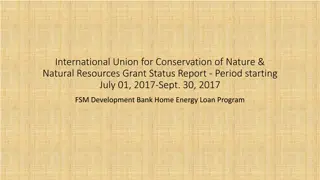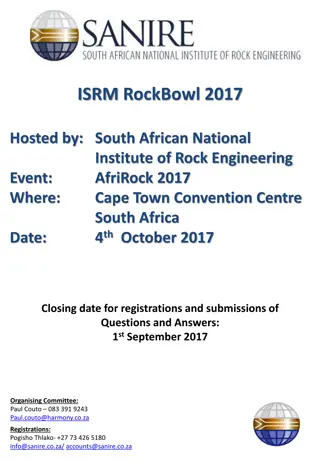
Role of RNA Molecules in Gene Expression Process Explained
Explore the significance of RNA molecules as the second macromolecules in gene expression, detailing their types, structures, and functions in both prokaryotic and eukaryotic cells. Understand the transcription process, RNA classifications, and the essential role of mRNAs, tRNAs, and rRNAs in translation and protein synthesis.
Download Presentation

Please find below an Image/Link to download the presentation.
The content on the website is provided AS IS for your information and personal use only. It may not be sold, licensed, or shared on other websites without obtaining consent from the author. If you encounter any issues during the download, it is possible that the publisher has removed the file from their server.
You are allowed to download the files provided on this website for personal or commercial use, subject to the condition that they are used lawfully. All files are the property of their respective owners.
The content on the website is provided AS IS for your information and personal use only. It may not be sold, licensed, or shared on other websites without obtaining consent from the author.
E N D
Presentation Transcript
RNA molecules represent the second macromolecules in the cell .they are produced as the second step in gene expression process via transcription process. usually these molecules present in cytoplasm and in some cases they represent the genetic material for some viruses like HIV ( ) polioviruses ( ) influenza virus
Types There are 3 types of RNA which are synthesized via Transcription process ..They are classified to two types stable and unstable (degradable ) 1-tRNA : Stable RNA .it represent 10% from the total RNA 2-r RNA: Also stable it is the main component of ribosome beside some poly peptide protein .it represent 3- m RNA: not stable type cos it will degraded once it translated thus it represent 5%of total RNA non-coding RNAs are transfer RNA (tRNA ) and ribosomal RNA (rRNA), both of which are involved in the process of translation. Structure of m RNA: Messenger RNA carries information from DNA to the ribosome, the sites of protein synthesis (translation) in the cell. The coding sequence of the mRNA determines the amino acid sequence in the protein . The basic differences in m RNA structure in prokaryotic and Eukaryotic of RNA. : 80-85% from total RNA 1) The mRNAs of many bacteria and bacteriophage are polycistronic( ) . A polycistronic mRNA sharing several structural genes of an operon with one operator and one terminator . It contains several sites for initiating and terminating for more than a polypeptide product . On the other hand all known eukaryotes have only one site for initiation one protein synthesis. monocistronic. Thus eukaryote mRNAs are
2-m RNA in prokaryotic cell start(5 end ) with Leader sequence (upstream region ) contain the ribosomal binding proteins (Shine Dalgarno sequence )which has a complementary sequence in 16s rRNA(anti shine Dalgarno sequence) followed by start codon AUG(in the down stream region ( then the coding region then stop codon and the terminate region at 3 end , in Eukaryotic cell there will be CAP structure at 5 end and poly A tail at 3 end
proposed shine Dalgarno The by Australian scientists John Shine (b. 1946) and Lynn Dalgarno (b. 1935), is a prokaryotic mRNA, generally bases upstream of the start codon AUG. The Shine-Dalgarno sequence exists both in bacteria and archaea, being also present in some chloroplast and mitochondrial transcripts. The six-base consensus in Escherichia coli, for AGGAGGU. Shine-Dalgarno sequence helps recruit the ribosome to the mRNA to initiate protein synthesis by aligning itwith the start codon. For the m RNA in Eukaryotic cell it start with cap structure at 5 end then the leader sequence (untranslated region ) followed by start codon then the coding region , at the 3 end there is the poly A tail (250-300 Adenine residue ) Shine-Dalgarno (SD) sequence, ribosomal binding site in 8 located around sequence example, is the AGGAGG; sequence is
(3) In most bacterial mRNAs translation begins while the mRNA is still being transcribed on DNA. In eukaryotes the mRNA transcribed on the chromosomes passes through the nuclear pores into the cytoplasm. Here it forms complexes with ribosomes, which synthesize proteins. Thus translation usually begins only after transcription is completed. (4) Prokaryote mRNA is very short lived. It is constantly under going breakdown to its constituent ribonucleotides by ribonucleases. In E. coli the average half life of some mRNAs is about two minutes. In bacteria mRNA may be so short lived that while one end is translating proteins the other end may be The short life of bacterial mRNAs has been explained on the grounds that it provides greater flexibility to the bacteria by adjusting to changing environmental conditions. The short life of its mRNAs enables a bacterium to synthesize different enzymes in response to environmental changes. In general, eukaryote mRNAs have longer half lives than bacterial mRANAs. Eukaryote mRNAs undergoing breakdown. are metabolically stable. (5) In prokaryotes the mRNAs undergo very little processing after being transcribed. There is a very short time interval between transcription and translation. In fact considerable translation may already take place before completion of transcription, and degradation of mRNA may begin. In eukaryotes the transcribed mRNA undergoes considerable processing before mature mRNA is formed.
In molecular genetics, an untranslated region (or UTR) refers to either of two sections, one on each side of a coding sequence on a strand of mRNA. If it is found on the 5' side, it is called the 5' UTR (or leader sequence), or if it is found on the 3' side, it is called the 3' UTR (or tailer sequence).there is a cap structure in 5 end (Eukaryotic )and poly A at 3 end this will protect m RNA from degradation at lest few days
Transfer RNA (tRNA) is a small RNA chain of about 80 nucleotides that transfers a specific amino acid to a growing polypeptide chain at the ribosomal site of protein synthesis during translation. It has sites for amino acid attachment at acceptor arm at the CCA 3 OH for codon recognition that binds to a specific sequence on the messenger RNA chain through hydrogen bonding end and an anticodon region
Also It contain unusual nitrogen base like Pseudouridine(),, and ribo thymidine (T) which are found in various places specially T C loop of tRNA). Another notable modified base is Dihydroxy uracil in DUH2 loop, the third loop is the anti-codon loop complementary sequences to m RNA triplet codon . that contain the
general the function of t RNA(uncharged) is to Aminoacyl t RNAtransferase enzyme and the reaction require ATP .once the attachment complete the tRNA(uncharged)+ A.A AA-tRNA complex (charged or acylated t RNA) attached to A.A via tRNA become charged .
Ribosomal RNA (rRNA) is the catalytic component of the ribosome's. Eukaryotic ribosomes contain four different rRNA molecules: 18S, 5.8S, 28S and 5S rRNA. Three of the rRNA molecules are synthesized in the nucleolus, and one is synthesized elsewhere. In the cytoplasm, ribosomal RNA and protein combine to form a nucleoprotein called a ribosome. The ribosome binds mRNA and carries out protein synthesis. Several ribosome's may be attached to a single mRNA at any time. Nearly all the RNA found in a typical eukaryotic cell is rRNA






















